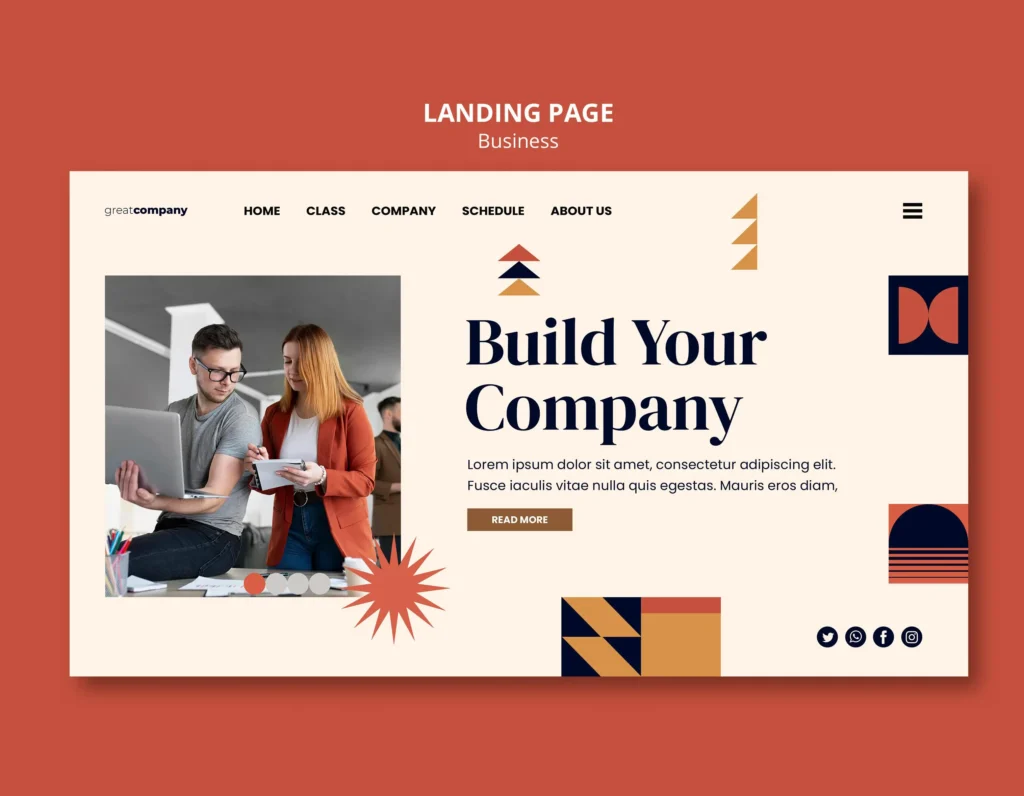Introduction
Pay-per-click (PPC) advertising is a cornerstone of digital marketing, offering businesses a powerful tool to drive traffic, generate leads, and boost conversions. However, achieving success with PPC requires more than just setting up campaigns and letting them run. It involves meticulous optimization to ensure maximum return on investment (ROI). This guide delves into the intricacies of PPC optimization, providing you with actionable insights to refine your campaigns and outperform your competition.

Chapter 1: Understanding PPC Basics
1.1 What is PPC?
PPC, or pay-per-click, is an online advertising model where advertisers pay a fee each time their ad is clicked. It’s a way of buying visits to your site, rather than attempting to earn those visits organically. Google Ads, Bing Ads, and social media platforms like Facebook and LinkedIn are popular PPC platforms.
1.2 Key Components of PPC
- Keywords: The foundation of any PPC campaign. Keywords determine where your ads appear.
- Ad Copy: The text or creatives that appear in your ads, influencing click-through rates (CTR).
- Landing Pages: The destination URLs that your ads point to, playing a crucial role in conversion.
- Bid Strategy: The approach to bidding on keywords to achieve optimal ad placement.
- Quality Score: A metric that Google uses to rate the relevance and quality of your ads and keywords.
Chapter 2: Keyword Research and Selection
2.1 The Importance of Keywords
Keywords are the bridge between what users are searching for and the solutions your business provides. Effective keyword research identifies the terms potential customers use, ensuring your ads reach the right audience.
2.2 Tools for Keyword Research
- Google Keyword Planner: A staple for finding relevant keywords and estimating their search volume.
- SEMrush: Offers competitive analysis, showing the keywords your competitors are bidding on.
- Ahrefs: Provides insights into keyword difficulty and click potential.
- Ubersuggest: A user-friendly tool for generating keyword ideas and understanding their performance.
2.3 Types of Keywords
- Broad Match: Reaches the widest audience but may result in irrelevant clicks.
- Phrase Match: Ensures ads appear for searches containing the exact phrase or close variations.
- Exact Match: Limits visibility to searches matching the keyword exactly, offering precise targeting.
- Negative Keywords: Prevent your ads from showing for certain terms, refining audience targeting.
2.4 Selecting High-Performing Keywords
Focus on long-tail keywords with lower competition and higher intent. Analyze your competitors’ keywords and continually refine your list based on performance data.
Chapter 3: Crafting Compelling Ad Copy
3.1 Elements of Effective Ad Copy
- Headline: Captures attention; should be engaging and relevant to the search query.
- Description: Offers detailed information, emphasizing unique selling points (USPs) and calls to action (CTAs).
- Display URL: Provides a preview of the landing page, boosting CTR by aligning with user intent.
3.2 Best Practices for Ad Copy
- Use power words to evoke emotion and action.
- Highlight benefits rather than features.
- Include numbers or statistics to build credibility.
- Implement A/B testing to identify what resonates best with your audience.
Chapter 4: Optimizing Landing Pages
4.1 The Role of Landing Pages
A well-optimized landing page directly impacts conversion rates. It must be relevant, fast-loading, and user-friendly.
4.2 Essential Elements of High-Converting Landing Pages
- Headline: Mirrors the ad copy, ensuring consistency.
- Value Proposition: Clearly communicates the benefit of your offer.
- Call to Action (CTA): Stands out and directs users toward the desired action.
- Trust Signals: Includes testimonials, reviews, and certifications.
- Mobile Optimization: Ensures seamless experience across devices.
4.3 A/B Testing for Landing Pages
Experiment with different headlines, CTAs, images, and layouts to identify the most effective combinations. Tools like Unbounce and Optimizely can facilitate A/B testing.
Chapter 5: Bid Strategies and Budget Management
5.1 Choosing the Right Bid Strategy
- Manual CPC: Offers control over individual keyword bids.
- Enhanced CPC: Adjusts bids based on the likelihood of conversion.
- Target CPA (Cost Per Acquisition): Aims to get conversions at a specific cost.
- Target ROAS (Return on Ad Spend): Focuses on achieving a particular return on ad spend.
5.2 Budget Allocation
Allocate budgets based on campaign performance. Use the 80/20 rule to focus more resources on high-performing keywords and ads. Monitor and adjust bids regularly to avoid overspending on underperforming keywords.
Chapter 6: Leveraging Analytics and Tracking
6.1 Importance of Analytics
Analytics provide insights into user behavior, campaign performance, and areas for improvement.
6.2 Essential Metrics to Track
- CTR (Click-Through Rate): Measures the percentage of clicks your ad receives relative to impressions.
- Conversion Rate: Indicates the percentage of users who complete the desired action after clicking the ad.
- Quality Score: Affects ad rank and cost per click (CPC).
- Cost Per Click (CPC): Shows the actual cost paid for each click.
- Return on Investment (ROI): Assesses the profitability of your PPC campaigns.
6.3 Tools for PPC Analytics
- Google Analytics: Tracks user behavior and conversions.
- Google Ads Dashboard: Provides detailed insights into ad performance.
- Heatmaps: Tools like Hotjar show where users interact most on your landing pages.
Chapter 7: Advanced PPC Optimization Techniques
7.1 Audience Segmentation
Segment your audience based on demographics, behavior, and interests to tailor ads more effectively. Use remarketing lists to re-engage users who previously interacted with your site.
7.2 Ad Extensions
Leverage ad extensions such as site links, callouts, and structured snippets to provide additional information and increase CTR.
7.3 Dynamic Search Ads (DSAs)
DSAs automatically generate ads based on your website content, expanding reach without extensive keyword research.
7.4 Automation and AI in PPC
Use automated rules and AI-driven tools to optimize bids, manage budgets, and personalize ad experiences dynamically.
Chapter 8: Common PPC Pitfalls and How to Avoid Them
8.1 Overspending on Broad Keywords
Regularly review and refine your keyword list to ensure budget allocation aligns with performance.
8.2 Ignoring Mobile Optimization
With a significant portion of searches conducted on mobile devices, ensure ads and landing pages are mobile-friendly.
8.3 Failing to Test Ad Variations
Continuous testing is crucial. Rotate ad copies and creatives to identify what drives the best results.
8.4 Neglecting Quality Score
A low Quality Score increases CPC and reduces ad visibility. Focus on relevance, ad copy quality, and landing page experience.
Chapter 9: Case Studies of Successful PPC Campaigns
9.1 Case Study 1: E-commerce Brand
- Challenge: High competition and low CTR.
- Solution: Refined keyword targeting, personalized ad copy, and optimized landing pages.
- Result: 40% increase in CTR and 25% reduction in CPC.
9.2 Case Study 2: SaaS Company
- Challenge: Low conversion rates.
- Solution: Implemented A/B testing for landing pages, improved CTAs, and utilized remarketing.
- Result: 50% increase in conversions and 30% improvement in ROI.
Chapter 10: Future Trends in PPC
10.1 Voice Search
As voice search grows, optimize for conversational keywords and question-based queries.
10.2 Visual Search
Incorporate visual elements and optimize for image search to capture a visually-oriented audience.
10.3 Enhanced Automation
AI and machine learning will play a larger role in bid management and ad personalization, making campaigns more efficient and effective.
Conclusion
PPC optimization is a dynamic process that requires continuous monitoring and refinement. By understanding the fundamentals, implementing advanced techniques, and staying ahead of emerging trends, you can maximize your PPC campaigns’ effectiveness and achieve outstanding results. With this comprehensive guide, you’re equipped to take your PPC strategies to the next level, ensuring sustained growth and success in the competitive digital landscape.






